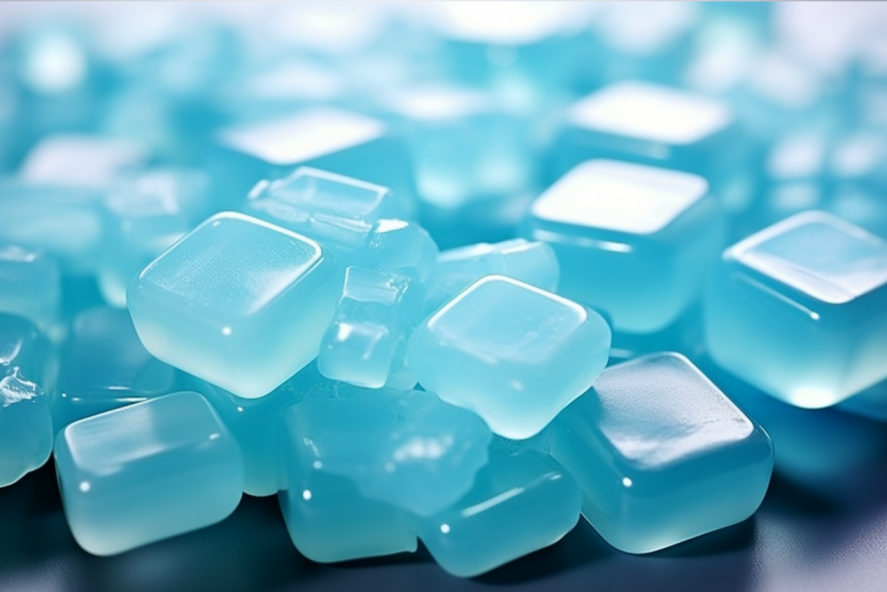Unveiling the Versatility: Chlorosulfonated Polyethylene Synthetic Rubber
20/05/2024
Chlorosulfonated Polyethylene Synthetic Rubber, often referred to simply as Chlorosulfonated Polyethylene Synthetic Rubber rubber, stands out as a versatile material with a wide array of industrial applications. Its unique blend of properties makes it a valuable component in various sectors, ranging from automotive to marine industries.
History and Development
1.1 Origins and Evolution
The journey of Chlorosulfonated Polyethylene Synthetic Rubber dates back to the mid-20th century when researchers sought to develop synthetic rubber with enhanced chemical resistance and weatherability compared to natural rubber. Initially, it was synthesized as a copolymer of ethylene and chlorine, but further refinement led to the addition of sulfur and the replacement of some chlorine atoms with sulfonic acid groups, giving rise to its distinctive chlorosulfonated structure.
1.2 Milestones
Key milestones mark the evolution of Chlorosulfonated Polyethylene Synthetic Rubber, including breakthroughs in polymerization techniques and advancements in understanding its chemical structure. These milestones paved the way for tailoring Chlorosulfonated Polyethylene Synthetic Rubber’s properties to suit specific applications, making it a sought-after material in diverse industries.
Chemical Structure and Composition
2.1 Understanding the Molecular Makeup
Chlorosulfonated Polyethylene Synthetic Rubber’s chemical structure consists of a backbone of polyethylene chains with alternating chlorine and sulfonic acid groups attached. Chlorosulfonation, the process of introducing both chlorine and sulfonic acid functionalities onto the polyethylene backbone, plays a crucial role in the synthesis of it. This unique structure imparts desirable properties such as chemical resistance, weatherability, and flexibility to the material.
2.2 Role of Chlorosulfonation
Chlorosulfonation involves the reaction of polyethylene with a mixture of chlorine and sulfur trioxide. This process results in the substitution of hydrogen atoms in the polyethylene backbone with chlorine and sulfonic acid groups. The controlled incorporation of these functional groups enables the fine-tuning of Chlorosulfonated Polyethylene Synthetic Rubber’s properties, making it suitable for a wide range of applications.
Properties of Chlorosulfonated Polyethylene Synthetic Rubber
3.1 Physical and Chemical Attributes
Chlorosulfonated Polyethylene Synthetic Rubber exhibits a remarkable combination of physical and chemical properties. It boasts excellent resistance to ozone, weathering, and chemicals, making it ideal for outdoor applications. Moreover, it retains its flexibility over a wide temperature range, ensuring reliable performance even in harsh environmental conditions.
3.2 Comparison with Other Synthetic Rubbers
Compared to other types of synthetic rubber such as neoprene and EPDM (ethylene propylene diene monomer), Chlorosulfonated Polyethylene Synthetic Rubber offers superior resistance to oils, fuels, and solvents. Additionally, its ability to maintain elasticity at low temperatures sets it apart as a preferred choice for applications subjected to extreme environments.

Applications
4.1 Diverse Industrial Uses
Chlorosulfonated Polyethylene Synthetic Rubber finds extensive use across various industries due to its unique combination of properties. In the automotive sector, it is employed in the manufacturing of seals, gaskets, and hoses, where resistance to automotive fluids and weathering is crucial. Similarly, in the construction industry, Chlorosulfonated Polyethylene Synthetic Rubber contributes to the production of roofing membranes, waterproofing materials, and protective coatings, ensuring durability and longevity in building structures.
4.2 Specific Examples
In the marine industry, Chlorosulfonated Polyethylene Synthetic Rubber plays a vital role in the fabrication of inflatable boats, life rafts, and buoys, where resistance to saltwater, UV radiation, and abrasion is essential. Moreover, it materials are utilized in the production of protective clothing and equipment for workers in hazardous environments, offering reliable protection against chemical exposure and harsh weather conditions.
Advantages of Chlorosulfonated Polyethylene Synthetic Rubber
Chlorosulfonated Polyethylene Synthetic Rubber offers several advantages over other synthetic rubbers, making it a preferred choice in various industrial applications.
5.1 Chemical Resistance
One of the primary advantages of it is its exceptional chemical resistance. Chlorosulfonated Polyethylene Synthetic Rubber exhibits superior resistance to oils, fuels, acids, and alkalis compared to many other synthetic rubbers. This property makes it particularly well-suited for applications where exposure to harsh chemicals is common, such as automotive seals and gaskets, chemical processing equipment, and protective clothing for chemical workers.

5.2 Weatherability and UV Resistance
Chlorosulfonated Polyethylene Synthetic Rubber also boasts excellent weatherability and UV resistance. It can withstand prolonged exposure to sunlight and outdoor elements without significant degradation, making it an ideal choice for outdoor applications such as roofing membranes, inflatable structures, and marine equipment.
5.3 Flexibility and Low-Temperature Performance
It maintains flexibility over a wide temperature range, from extreme cold to high heat. This flexibility ensures reliable performance in diverse environmental conditions, making it suitable for applications where flexibility is critical, such as automotive hoses, conveyor belts, and flexible tubing.
Limitations and Challenges
Despite its many advantages, Chlorosulfonated Polyethylene Synthetic Rubber also has some limitations and challenges that need to be considered in its application.
6.1 Cost
One of the primary limitations of it is its relatively high cost compared to other synthetic rubbers. The chlorosulfonation process used to manufacture Chlorosulfonated Polyethylene Synthetic Rubber involves multiple steps and specialized equipment, which contributes to its higher production costs. As a result, it may not be cost-effective for some applications where lower-cost alternatives are available.
6.2 Processing Difficulty
It can be more challenging to process compared to other synthetic rubbers due to its unique chemical structure and properties. It requires specialized equipment and expertise for compounding, molding, and extrusion processes, which can add complexity and cost to manufacturing operations.
6.3 Limited Availability
Chlorosulfonated Polyethylene Synthetic Rubber may also have limited availability compared to more widely used synthetic rubbers such as EPDM and neoprene. This limited availability can pose challenges in sourcing it materials, especially for niche or specialized applications.
Future Trends and Research
7.1 Emerging Trends in Chlorosulfonated Polyethylene Synthetic Rubber Technology
Despite its limitations, ongoing research and development efforts are focused on enhancing the properties and expanding the applications of Chlorosulfonated Polyethylene Synthetic Rubber.
7.2 Improved Sustainability
One emerging trend in it technology is the development of more sustainable manufacturing processes and materials. Researchers are exploring alternative feedstocks and greener production methods to reduce the environmental impact of Chlorosulfonated Polyethylene Synthetic Rubber production while maintaining its performance characteristics.

7.3 Enhanced Performance
Another focus of research is on improving the performance properties of Chlorosulfonated Polyethylene Synthetic Rubber, such as increasing its tensile strength, tear resistance, and thermal stability. By optimizing the chemical composition and processing parameters, researchers aim to develop it materials with enhanced mechanical properties and broader applicability.
7.4 New Applications
Researchers are also exploring new applications for it in emerging industries such as renewable energy, medical devices, and aerospace. By leveraging its unique combination of properties, it has the potential to address unmet needs and provide innovative solutions in these rapidly evolving sectors.
Conclusion
In conclusion, Chlorosulfonated Polyethylene Synthetic Rubber stands out as a versatile material with a rich history of development and a wide range of industrial applications. Its unique chemical structure, achieved through chlorosulfonation, imparts desirable properties such as chemical resistance, weatherability, and flexibility, making it indispensable in sectors ranging from automotive to marine industries. As technology advances and new challenges emerge, the role of it is likely to expand further, driving innovation and progress across diverse fields.




